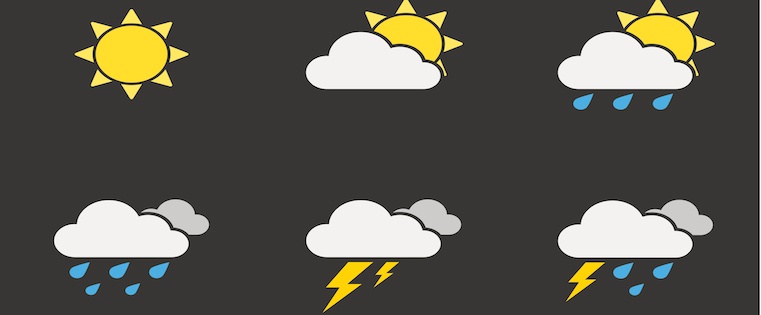1 min read
Most Staffing Firms are Not Built to Scale, But to Survive
Most staffing firms don’t struggle to scale because their teams aren’t working hard. They struggle because they don’t have a real go-to-market...
4 min read
![]() Dan Fisher
:
Aug 9, 2017 11:27:29 AM
Dan Fisher
:
Aug 9, 2017 11:27:29 AM

I've been blessed with the opportunity of working with hundreds of sales and recruiting teams from IT staffing companies across the country. One of the most common questions I get is "Dan, how does our sales team stack up against the competition?" As you can imagine, there are many ways in which I can answer this question and even  more ways in which to compare and contrast one sales team to another. So a few years ago I started answering this question with the following question, "how accurate was your most recent sales forecast?" I usually get a deer in the headlights kind of response.
more ways in which to compare and contrast one sales team to another. So a few years ago I started answering this question with the following question, "how accurate was your most recent sales forecast?" I usually get a deer in the headlights kind of response.
A sales forecast tells you just about everything you need to know about a sales organization. Your sales forecast is a reading of your vital signs, telling the sales leader and CEO how healthy or unhealthy the sales organization is. However, when asked to pull together their sales forecast most sales managers rely exclusively on past experience and gut instinct. Many more lack a buyer aligned sales process and therefore can't explain how they arrived at the numbers in their sales forecast or explain why they think their sales forecast accuracy will improve from the prior month.
In this blog post I'm going to share with you what you can learn from an inaccurate sales forecast.
What Inaccurate Sales Forecast Says About Your Sales Organization
At a minimum, an inaccurate (or inability) sales forecast demonstrates your sales team likely has:
Understanding Buyer Behavior, How Your Customers Buy
Accurate sales forecasting starts with having a sound understanding of customer behavior. You will never, ever have an accurate sales forecast until you first understand buyer behavior and how your customers buy.
The most common mistake I see IT staffing sales managers make with their sales forecasting is they simply list out all of the tasks and activities they have completed. They think to themselves, “I better tell my reps to do more activity because more activity will lead to more closed deals." Wrong! The problem with this thinking and logic is it fails to take the buyer into consideration. It fails to account for the steps the buyer has completed in their purchasing process, what steps still need to be completed what the buyer is willing to do.
One piece of advice that I received from a mentor is salespeople don’t earn a commission for the things they do or complete, salespeople earn a commission based on the steps your customer completes. Your sales process will only move forward when the customer commits to taking action. You can submit all the candidates in the world but it won't do a damn thing if you can’t compel your customer to review their resumes and interviews those candidates. It is incumbent on the sales organization to get crystal clear on how your customer will buy from you including their interview, hiring and decision making process. What is the process they will use? What milestones in the purchasing process still lie ahead and need to be approved? This is why we suggest IT staffing firms build a buyer aligned sales process.
Customer Driven, Milestone based Pipeline
I suspect at some point during your sales career you have heard the following terms in one form or another:
What these sales funnel metaphors are referring to is where your customer is at in their process for buying your service or hiring your consultant. It has nothing to do with where you are at with sourcing, screening or submitting candidates. The customer is the focal point.
Sales process lifecycle stages are designed to help you organize your opportunities based on where the customer and seller reside within the sales process. A verifiable outcome is an observable, verifiable fact that proves that the seller has successfully completed a step in the sales process. There are two two types of verifiable outcomes; Sales Driven Verifiable Outcomes, and Customer Driven Verifiable Outcomes. Sales driven verifiable outcomes are based on observable and verifiable tasks, activities and/or artifacts that the salesperson completes or produces. Customer driven verifiable outcomes are based on observable and verifiable tasks, activities and artifacts that the customer completes and/or produces.
The key to having an accurate sales forecast is tied to have a buyer aligned sales process and the use the customer driven verifiable outcomes.
Whatever sales funnel milestones you chose, make sure they are embedded into your sales process including your CRM so that they can serve as sign posts or mile markers telling your salespeople exactly where they stand with their customer within the sales process. Where you stand in sales process is predicated and driven by the customer. This is the key to sales forecasting accuracy.
A Sales Forecast is Only a Moment in Time
Keep in mind that a sales forecast is simply a snapshot of a moment of time. Your customer's priorities including their purchasing process is constantly evolving and changing. For these reasons your sales forecasting including the stages of your sales funnel and your sales forecast must change and evolve with it. You may notice that your buyers change the way they purchase your service in which case you may need to add an additional milestone to your sales process. Or you may discover that the values you placed on each stage of your sales funnel (milestones) need to be revised because you have more predictive data about sales win rates.
Conclusion
Hopefully after reading this post you now recognize and understand why I ask customers "how accurate was your last sales forecast?" You can't have an accurate sales forecast without executing the sales fundamentals, so the answer to the question really does reveal the sales organizations level of effectiveness. Your sales team is a good as your sales forecast. If you and your sales team struggle with sales forecast accuracy you might want to check out my blog, why you can't accurately forecast sales.
To learn more about the benefits of, and how to implement a buyer aligned sales process, download our eBook, The Definitive Guide to Building a Buyer Aligned Sales Process.

1 min read
Most staffing firms don’t struggle to scale because their teams aren’t working hard. They struggle because they don’t have a real go-to-market...

In my previous post, How to Prevent Unexpected Contract Terminations, I shared how systemizing consultant and client check-ins at key milestones...

About a year ago, I was serving as the fractional revenue leader, managing sales and recruiting for a client.